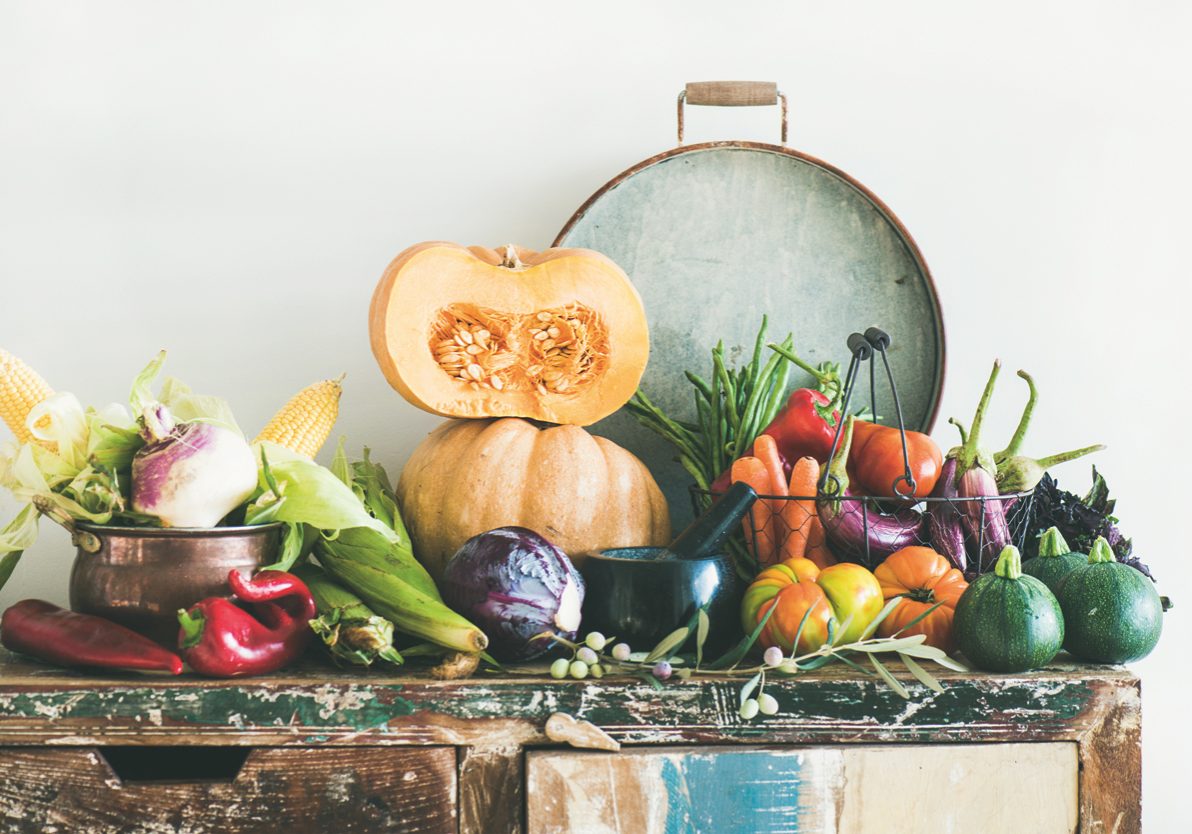
Ayurveda autumn cleanse
Ayurveda expert Zane Zalite discusses the autumn seasonal transition from pitta to vata, as the summer months make way for winter
According to ayurveda, the seasons can affect us greatly and in many different ways. The saying “as is the macrocosm, so is the microcosm” captures an important principle: that the environment in which we reside, affects both our body and mind.
With the weather hot and humid throughout the summer, our body’s core temperature is higher and we perspire; these are pitta qualities according to ayurveda.
Autumn weather, however, brings with it dry air and cooler nights, while daylight hours start to grow shorter.
When the air is cool and dry in the vata season (October through to February), we experience more of those qualities inside of us.
Evenings bring with them a gentle chill and we may feel the need to pull a blanket on and stay in and watch a movie, or sit by the fire.
After all those exciting summer months, filled with late nights, iced coffees, barbecues (and chilled wine!), we may notice the onset of some undesired symptoms, such as indigestion, or a stiff neck, back or hips.
Seasonal junction
According to ayurveda, a ‘Seasonal Junction’ (in Sanskrit: Ritu Sandhi) takes place during the 16-day transition period between one season and the next (i.e. eight days of the season that is ending and eight days of the season which is commencing).
During Ritu Sandhi, it is important to follow a special transitional diet and lifestyle routine, as we move from one season to the next.
It is clear that too much external heat causes our internal heat to rise. According to ayurveda, this results in higher acidity in our body – signs of this may include heartburn, loose bowel movements, redness of the skin, eyes or tongue and even high emotions.If we have the heating on full-blast indoors for a long time, it raises our own heat and dries the body, and we become thirsty and want to grab a cold water to cool down. This helps to balance pitta, but increases vata dosha in the body. We may feel the sudden onset of clicking in the joints, dryness of the skin, scalp or brittle hair and nails. We might notice more hair loss or an itchy scalp. These are all pitta and vata excessive signs in the body.
Although it might take 10 to 15 years to accumulate and to manifest to the level of pathophysisology, if these issues are not pacified during the seasonal junction regularly, it can further affect our musculoskeletal and hormonal systems by causing long-term conditions such as gastric ulcers, gout, ostheoarthritis, migraine, hyper or hypothyroidism, diabetes, IBS or skin conditions.
A change of diet and lifestyle from pitta to vata should be carried out gradually and gently. During these 16 days – from the last week of October to the first week of November – you can start introducing more vata-based nutrition and lifestyle routines. This allows you to shift into a full vata routine by the end of the second week.
The 16-day reset is the perfect way to maintain your health through the seasonal shift, but if you experience any signs of increased pitta and vata, you might need a more specific cleanse under supervision from your ayurvedic practitioner or to undergo an ayurvedic purification (pancha karma) to rejuvenate the body at a deeper level.
AUTUMN CLEANSE DIET

- Continue a pitta-pacifying diet during the first week and gradually transitition to an autumnal vata-pacifying diet by the second week.
- Use organic pitta spice mix (1:1 coriander, cumin, fennel, turmeric, cloves powder, salt and organic raw sugar) to season your food at lunch (10am- 2pm) and use organic vata spice mix (1:1 ajwain, cumin, ginger, fenugreek, turmeric, cinnamon and ½ asafoetida powders) to season your food at dinner.
- To aid cleansing, eat lighter foods, such as vegetables, soups and traditional ayurvedic kitchari.
- Avoid red meat, aged cheeses and fried foods.
- Make it a dry autumn: say no to alcohol during the cleanse.
- Drink hot water throughout the day to aid cleansing. You can make a ginger and turmeric drink from fresh roots and add lime or lemon and sweeten with natural sweeteners such as agave sugar or organic sugar cane
DAILY ROUTINE
The key here is to keep a regular daily routine for yourself at this period.
- Start your day with an early start (before 6am), followed by a grounding yoga practice and breathing exercises (pranayama).
- Next, nourish the body by carrying out a full body self-massage ritual with vata-pacifying oil, from head-to-toe, followed by a warm shower.
- Carry out Jala Neti nasal irrigation with a special Neti salt.
- Next, use food-grade organic sesame oil to administer one drop into each nostril in supine position with head slightly tilted backwards and to the side in which you administer the oil. Relax and wait five minutes to allow the oil to working its way through, then repeat for the other nostril. This is called Nasya, nasal administration of the oil; it not only lubricates and cleans the sinuses, but helps to reduce headaches and migraines, loosens stiffness in the neck and shoulder joints.
- Plan a gentle yoga routine and a 30-minute walk before you head to bed.

- Go to bed early and try to be asleep by 10pm. Early rising and an early rest at bedtime helps to balance all doshas, especially pitta and vata. It also allows the body’s systems to undergo natural detoxification. Each organ and its systems start their detox around 10pm:
if we are not asleep at that time, the body cannot naturally detoxify and rejuvenate our organs.
VATA-PACIFYING KITCHARI RECIPE
Kitchari is not only a potent blood purifier, but also supports proper kidney function. In ayurveda, it is considered a wholesome balanced food which not only fulfils the daily amount of calories but has the ability to draw out toxins. The mung bean is used to strip pesticides out of the system, which is especially supportive for the reproductive organs, liver, and the thyroid. Create yummy side dishes such as steamed or stewed vegetables and chutney.
PREPARATION & COOKING TIME: 30 minutes
SERVINGS: 4
INGREDIENTS
• ½ cup of mixed white basmati rice & brown rice
• 1 cup organic yellow split mung dal
• 4-5 cups water
• 3 tablespoons ghee or sesame oil
• 2 pinches hing (asafoetida)
• 1 teaspoon black mustard seeds
• 1 stick kombu seaweed
• 1 grated carrot (optional)
• ½ teaspoon cumin seeds
• ½ ajwain seed powder
• ½ coriander seed powder
• ½ teaspoon ginger powder
• ½ teaspoon rock salt
• ½ teaspoon turmeric
DIRECTIONS
- Wash rice, mung dal, soak for three hours or overnight.
- In a saucepan, warm the ghee over a medium heat.
- Add all the spices and sauté for one to two minutes.
- Add rice, mung beans, carrot and sauté for another couple of minutes.
- Then add four cups of water and bring to a boil. Once the kitchari has come to a boil, add the salt, hing and seaweed, and reduce heat to medium-low.
- Cover and cook until everything is tender approx. 20-25 minutes.
- The consistency should be that of a vegetable stew as opposed to a broth. Garnish with fresh coriander, fennel and dill.
Zane Zalite, BSc (Hons) Ayurveda and Physiotherapy, is an experienced ayurvedic health practitioner and owner of the Shakti Veda Spa (shaktivedaspa.co.uk). She is passionate about helping people to regain health naturally through the sacred practice of ayurveda.




